Salvia spp.
Salvia, a genus of plants in the mint (Lamiaceae) family with nearly a thousand members, is known for its toughness.
Heat tolerant, frost tolerant, drought tolerant, impervious to pests and disease, deer resistant – salvia takes a lickin’ and keeps on blooming beautifully.
“Because of their durability, salvias are something that everybody should have,” says Skip Richter, a county extension agent with Texas A&M Agrilife Extension Service. “Pick the right one for your area, and it will be a durable plant.”
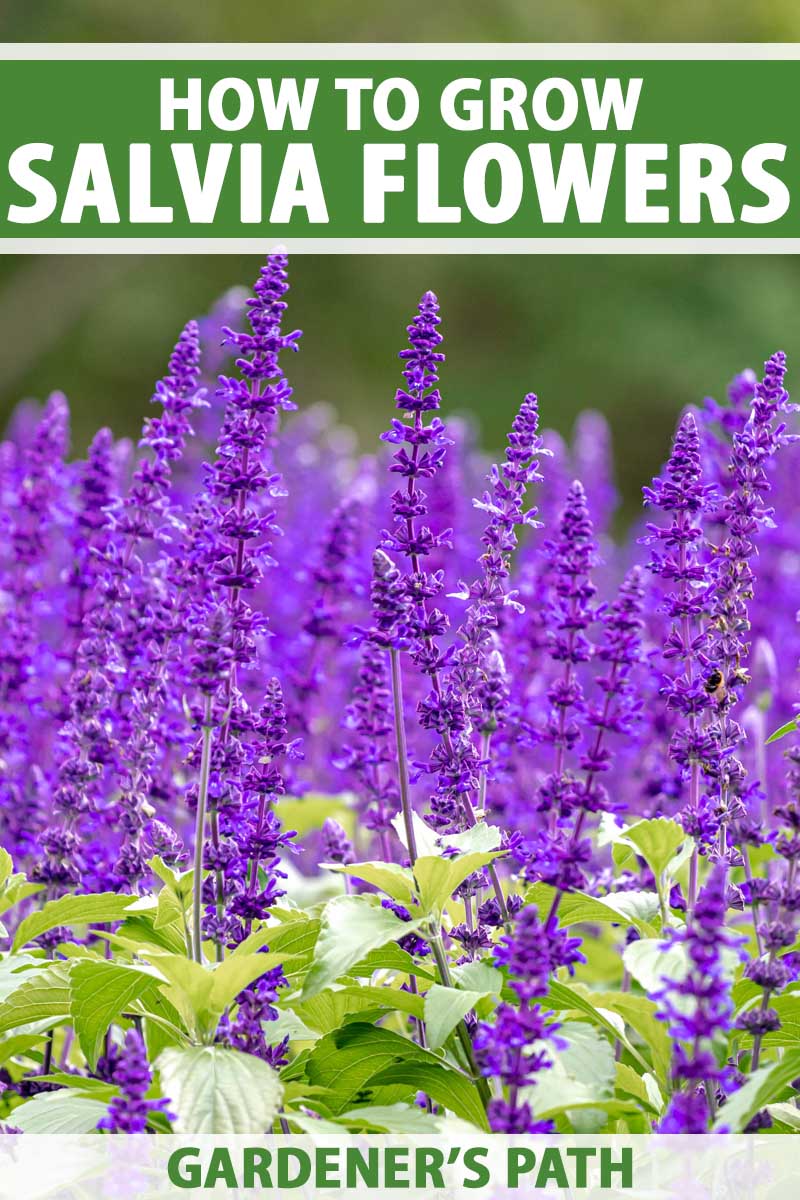
We link to vendors to help you find relevant products. If you buy from one of our links, we may earn a commission.
The large number of species in this genus also means the options are wide open to you, in terms of selecting the right salvia for your garden.
Curious about the many wonderful varieties and how to grow them? Here’s what we’ll discuss to help you make the most of this plant:
What You’ll Learn
Ready to get your hands dirty? Let’s go.
Cultivation and History
With 900-plus types, you’d expect to encounter some variety – and you’d be right.
In this group, you’ll find perennials, annuals, and semi-woody subshrubs. They can be tall, flowy plants, and types that hug the ground almost like a ground cover. They might be annuals, biennials, or perennials.
Flowers are available in a variety of hues: red, pink, white, blue, purple, coral, orange, green, and yellow.
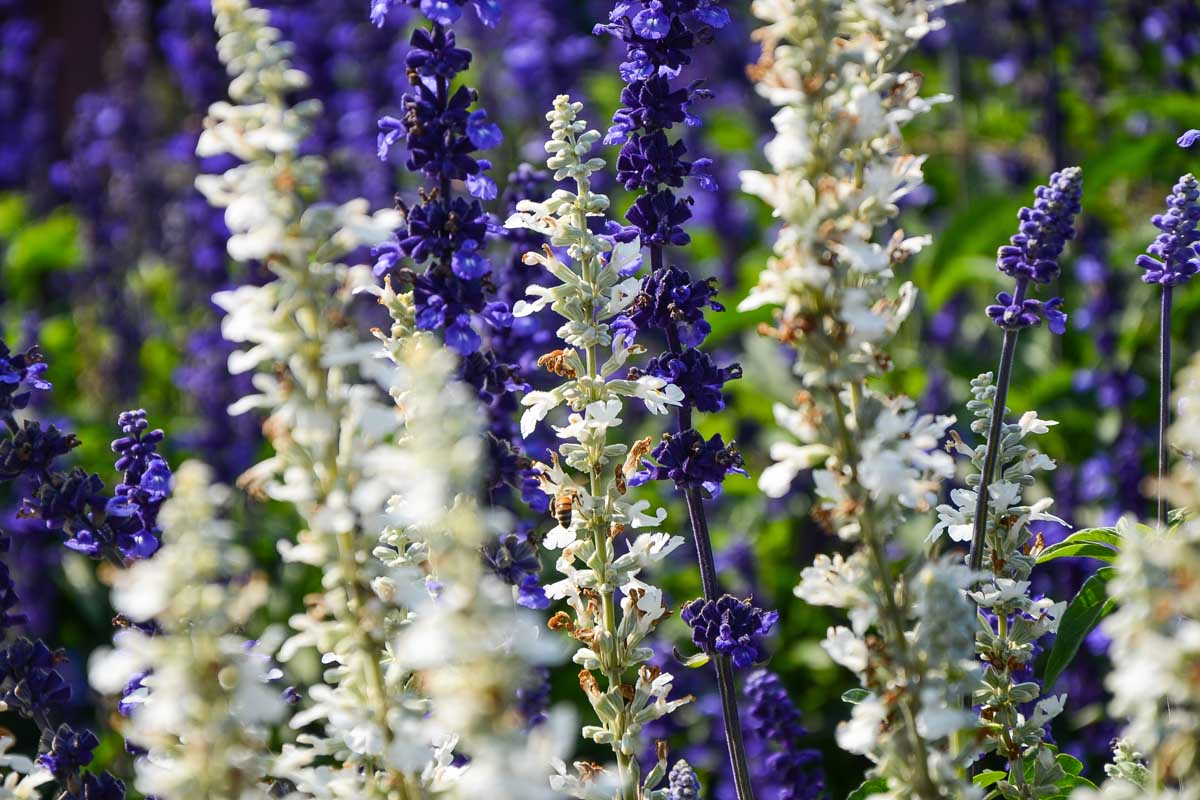
Some types appreciate full sun, and others do quite well in the shade. Some will fill the air with their lovely fragrance while others have no scent.
You’ll find salvias that do well in mass plantings, in borders, or in containers. And some give back by attracting pollinators such as butterflies and hummingbirds.
So what on earth defines saliva, if they can be so varied?
The botanical definition of a salvia is a plant with a unique lever mechanism that facilitates pollination. But don’t worry, you don’t have to examine every plant’s reproductive system to determine whether or not it’s a salvia!
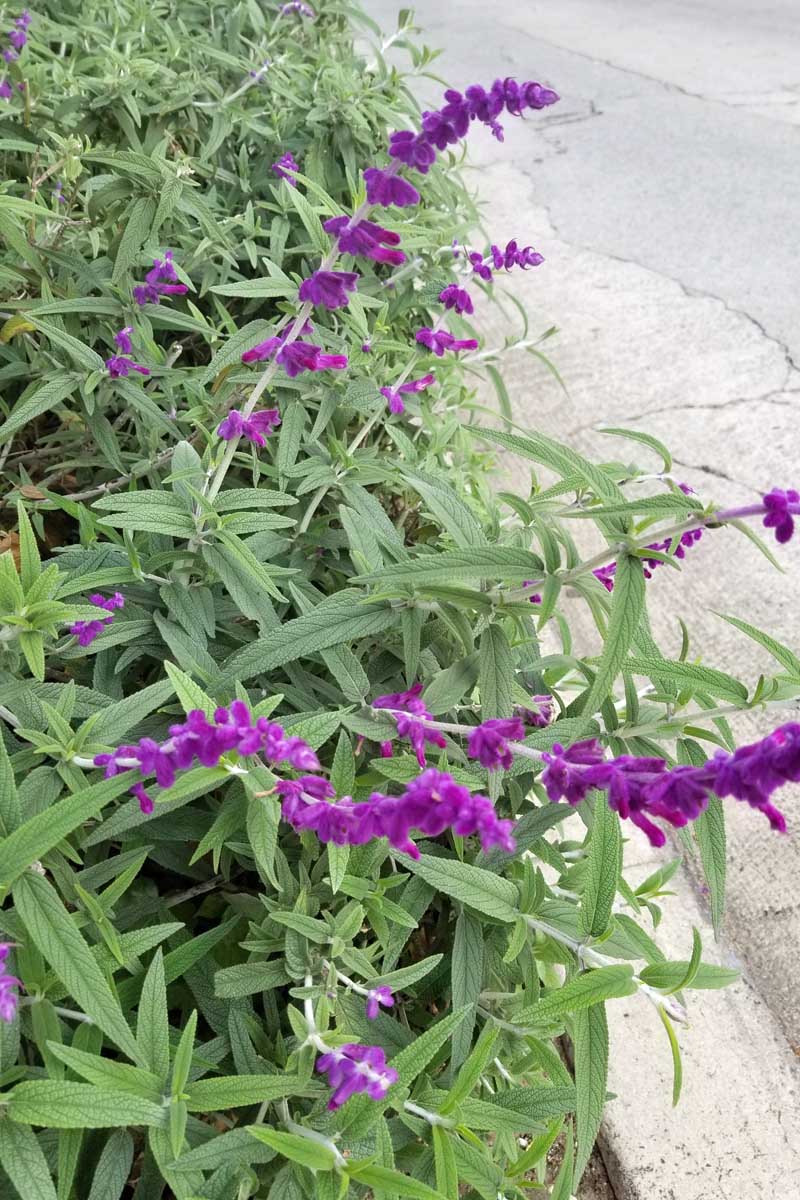
For our purposes, these are typically ornamentals in the Saliva genus. Herbs like garden sage and rosemary are also in this genus, but we’ll focus on those in their own guides.
But if you’re curious, botanically, salvias have two stamens rather than the four that are typical in the Mentheae tribe. This facilitates a mechanism where the pollen is deposited onto the pollinator when it lands on the flower.
This mechanism probably contributes to the diversity and variability of the species because a bee, for instance, would need to visit multiple flowers from likely increasingly distant plants to dislodge the pollen.
With that out of the way, let’s talk about how to bring these plants to your garden.
Salvia Plant Propagation
With simple growing requirements, new salvias are also easy to get started. Taking cuttings, starting seeds, dividing, and purchasing nursery starts are all options.
Let’s discuss seeds first.
From Seed
Seeds can be started outdoors after the last predicted frost date. You can also start seeds indoors eight to 10 weeks before the last frost.
If you opt to grow indoors, sow in cells or small, three-inch pots.
Use a seed-starting medium or a light, water-retentive potting soil. If you start them outdoors, loosen and amend the soil 12 inches down with some well-rotted compost or soil conditioner.
When you sow the seeds, they should be just pressed into the surface but not covered with soil. Most species need light to germinate.
Keep the soil evenly moist. If growing indoors, place them in an area where they will receive about eight hours of sunlight per day or under supplemental grow lights.
If you use supplemental lighting, be sure that the seedlings receive at least eight hours of darkness too – don’t leave those lights on.
If the seeds haven’t germinated within three weeks, it’s time to start over and try again.
Wait until the seedlings have at least two true leaves before moving them out into the garden. Before you transplant them, harden the seedlings off to help accustom them to the harsher conditions of outdoor life.
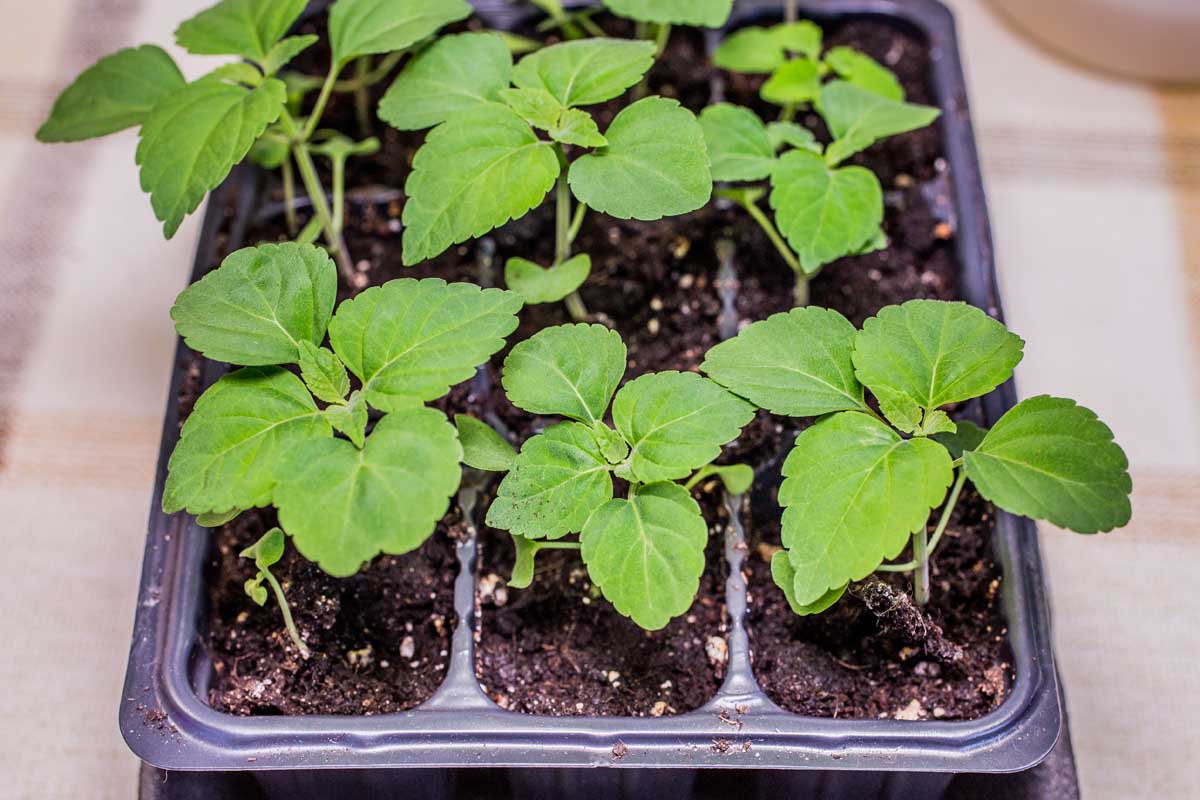
Hardening off is a common process and one you’ll want to familiarize yourself with. It involves gradually introducing a plant to the conditions of the outdoor environment.
If you were to toss a seedling out into full sun right away, it would probably die. So, ease them into the big world by bringing them outside for an hour and then bringing them back inside.
Choose a spot that’s in full sun but is protected from strong wind.
The next day, extend the time to two hours, and three on the third day. Keep adding an hour each day until you’ve reached a full week, and they’re ready to transplant.
From Cuttings
In the early fall, as the plant enters dormancy, take the tip of a non-flowering stem.
You want to cut about six inches just in front of a node. Remove all the lower leaves so that just two or three remain at the top.
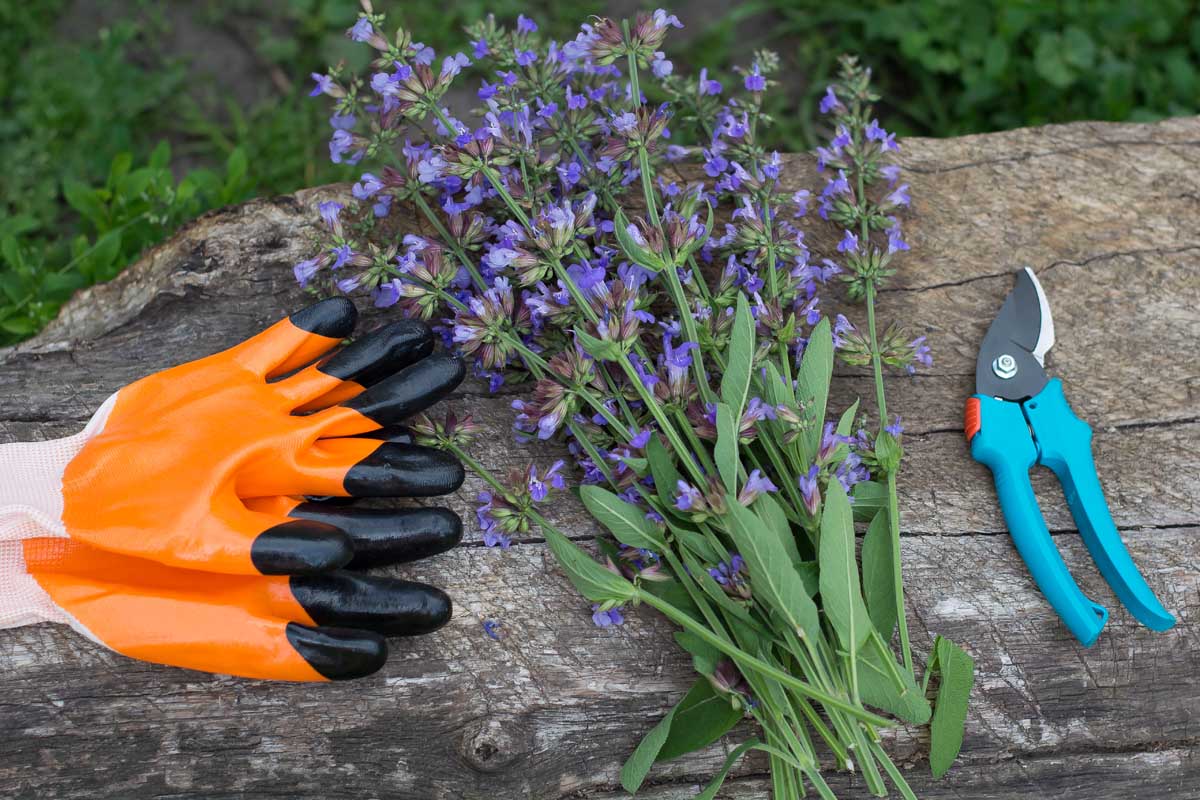
Place each cutting in a four-inch pot filled with potting medium and water the medium so that it feels like a well-wrung-out sponge.
Tent a plastic bag over the cutting to create a miniature greenhouse. Place the pot in an area with bright, indirect light.
Maintain soil moisture. In the spring, assuming that new growth has developed, harden the plants off and place them in the garden.
From Divisions
Salvias can not only be divided, but they do better when you split them up as they age. The best time to do so is in late winter or early spring, before new growth begins.
Find more tips on dividing salvia plants here.
Transplanting
Wait for a cool, cloudy day to transplant, if possible.
Spacing is determined by two factors: what the mature size of your plant will be and how dense or distantly spaced you want the garden to be.
If you want space between the plants, take the ultimate mature width, divide it in half, and add a few inches. If you want them to be more densely packed, take half of the mature width and subtract a few inches.
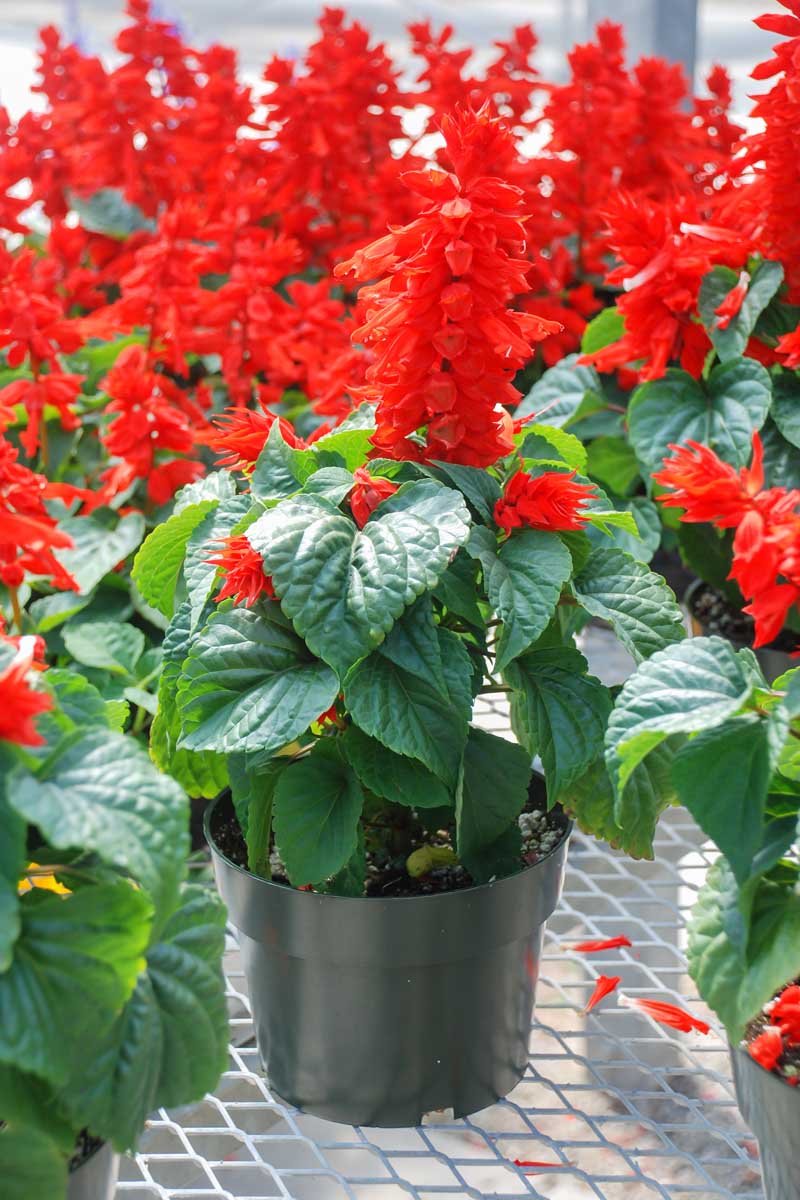
You can buy potted salvia practically anywhere. Or maybe your friends had some extra seedlings that they started.
However you get your hands on them, dig a hole about the same size as the existing pot and gently remove the plant from its pot. The same goes for seedlings or rooted cuttings.
Gently loosen the roots and place the plant into the hole you made. Keep the plant at the same height it was in the growing container.
Backfill with removed soil and water well. Adding mulch around the planting area can help to retain moisture and reduce weed pressure.
How to Grow Salvia Flowrs
Where you grow your salvia will depend on the variety.
Most like well-draining soils, so do keep that in mind. Average garden soil is fine for most varieties but heavy clay absolutely won’t do.
If you have heavy clay, grow your salivas in a container with good drainage.
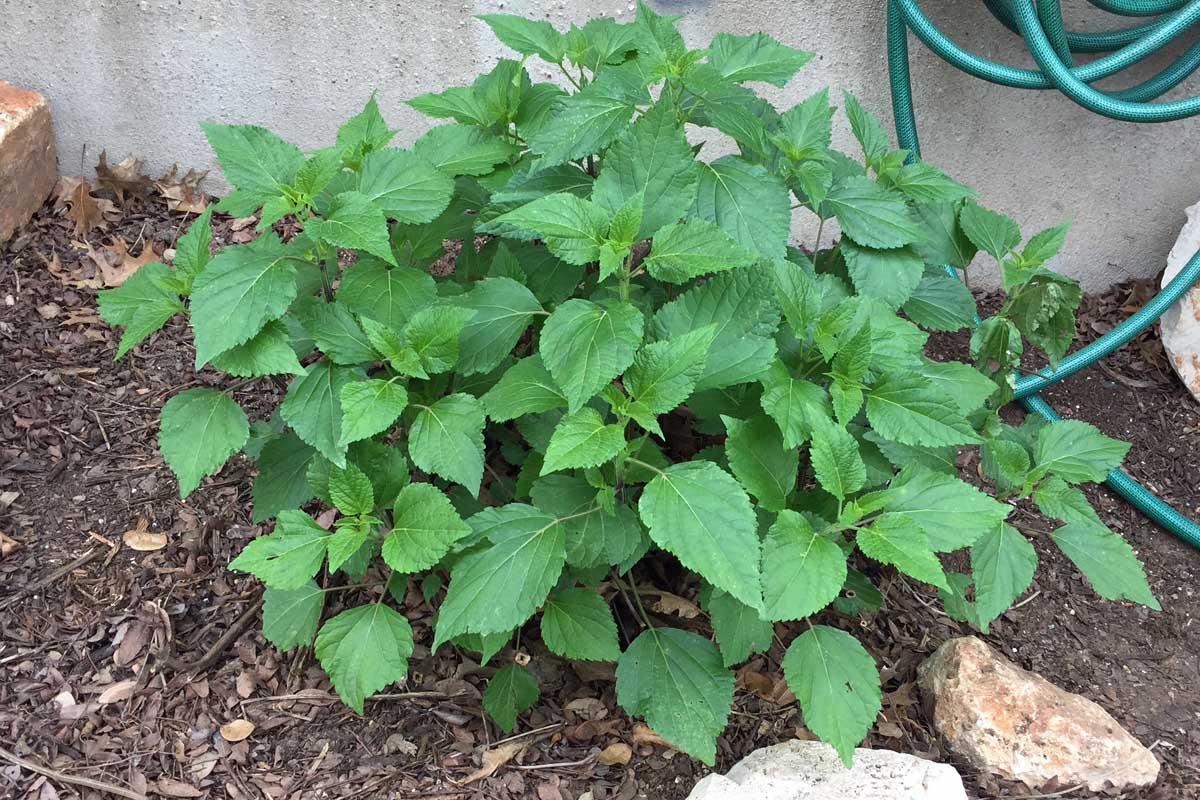
Most do well in full sun, but you can find some that do well in less light. Whichever type you have, give it the right amount of sun or you’re asking for trouble.
Many from this group are quite drought tolerant, requiring no supplemental water, even in Texas summers. Others will wilt when they’re parched. That said, some prefer moist conditions, such as bog sage (S. uliginosa).
Get to know your specific plants and nab yourself a moisture meter to tip you off as to when it’s time to water.
When it comes to feeding, Richer says, “They don’t need a lot of fertilization. Look at your plant and see how it’s performing.”
If it looks like it needs a boost, “Use a turf-type fertilizer – one that’s heavier in nitrogen,” he says. “Don’t overdo it. Start at the lower end.”
Of course, Richter says, the best way to know if you need to fertilize is by performing a soil test. Many county extension services will analyze a soil sample for you.
Growing Tips
- Most salvias do best in full sun, but there are exceptions. Familiarize yourself with your specific cultivar’s needs.
- Many are drought tolerant, but again, there are exceptions.
- Fertilize only if your plant looks weak or if a soil test indicates the soil is deficient.
Pruning and Maintenance
To encourage bushy growth and lush blooms, many salvias do best with a pretty severe haircut a couple of times a year.
Do this once in late winter before blooming commences and then again in early fall.
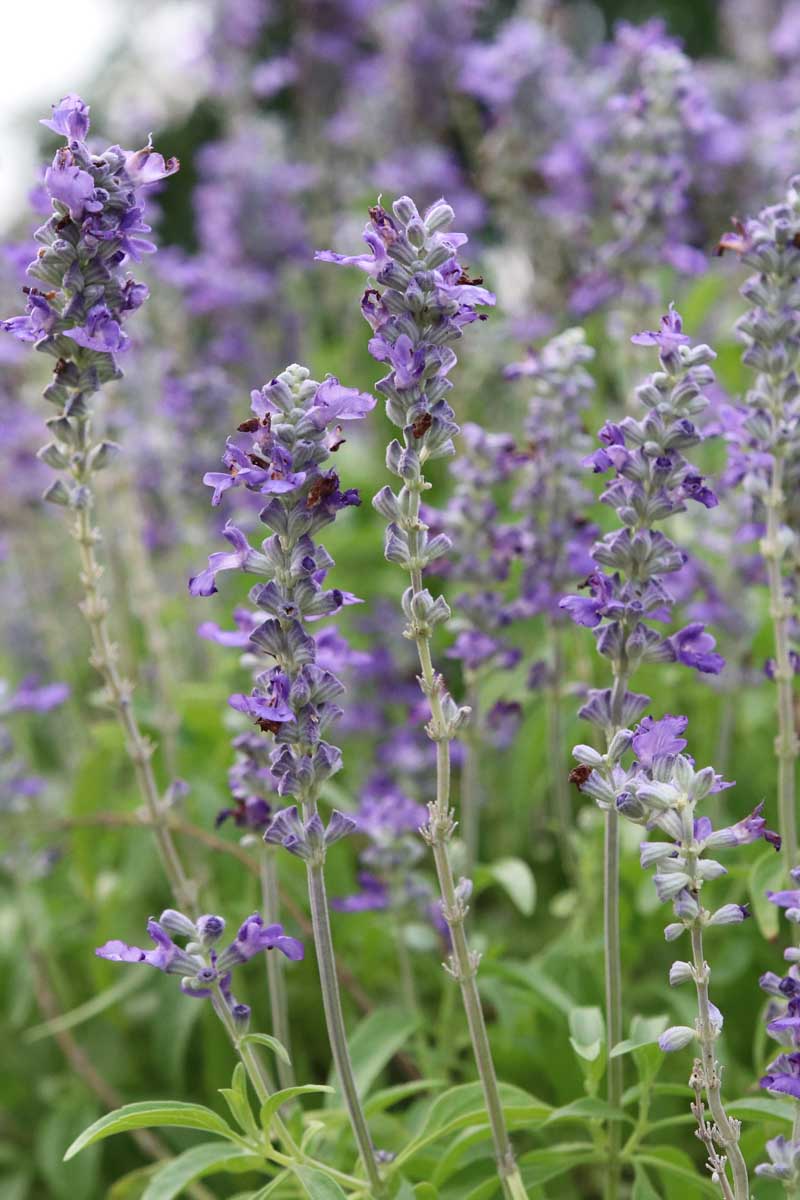
“Salvias tend to bloom at the terminal end of new growth,” says Richter. “Periodic shearing helps to extend the blooming season.”
Throughout the summer, clip bloom spikes after flowers have faded. Deadheading will also encourage more flowering.
Salvia Cultivars to Select
With such a large range of options, the tricky part is narrowing down which of this fabulous group you’d like to grow! Here are just a few of our favorites:
Black and Blue
S. guaranitica ‘Black and Blue’ is incredibly unique.
It has electric cobalt blue flowers with black sepals, standing out from the typical garden colors. And it can grow in any area of the continental US as long as it’s provided with good drainage.
Want one? Grab a plant at Nature Hills Nursery. It will eventually mature into a manageable two- to three-foot-tall specimen.
Bumbleberry
If you’re looking for a bold, attention-grabbing perennial salvia, check out S. nemorosa ‘Bumbleberry.’
The fuchsia pink flowers are held by dark purple calyxes on a petite plant that stays under a foot tall.
Adaptable enough to thrive in Zones 3 to 9, ‘Bumbleberry’ can add dynamic color to pretty much any garden in the continental US and is available at Nature Hills Nursery.
Hot Lips
They broke the mold with S. microphylla ‘Hot Lips.’ It grows to a stately four feet tall with red and white, solid red, and solid white blossoms.
The only downside is that you have to be one of the lucky ones in Zones 7 to 10 to grow it.
Find yourself a plant at Burpee.
May Night
With midnight purple flowers on tall spikes, Salvia x sylvestris ‘May Night’ adds moody color to gardens in Zones 4 to 9.
It grows right up to that sweet spot of two feet tall.
Purchase a live plant at Fast Growing Trees.
Pink Profusion
S. nemorosa ‘Pink Profusion’ is a perennial rebloomer that thrives in Zones 3 through 8.
Tall spikes of bright pink flowers with darker pink calyxes grow on a 16-inch-tall plant.
Nature Hills Nursery carries this colorful cultivar.
Royal Red
I remember spending months looking for a truly red lipstick. One that didn’t lean a bit orange or a touch blue.
If Windwalker™ ‘Royal Red’ was around, I could have brought it with me as an example of a true, pure red.
A hybrid of S. microphylla ‘Raspberry Delight’ and S. darcyi, this four-foot-tall perennial meadow sage produces spires of red flowers that are positively irresistible to hummingbirds and pollinators.
Purchase yours at Nature Hills Nursery for growing in Zones 5 to 9.
Violet Queen
At just 18 inches tall, you might not expect this plant to make much of a statement in the garden. But the royal purple flower spikes on ‘Violet Queen’ are impossible to ignore.
This S. nemerosa cultivar is quick growing and reblooms readily.
For a 150-milligram packet of seeds, visit Botanical Interests.
Managing Pests and Disease
Salvias are relatively problem-free, and deer, rabbits, and other herbivores won’t bother them. Just a few insects find them tasty enough to meddle with. Let’s talk about those first.
Insects
Aphids and spider mites are common on all kinds of plants. They particularly like dry, warm conditions, just like salvias do.
Aphids
All salvia species, including garden sage (S. officinalis) are preferred hosts of the sage aphid, Aphis passeriniana.
These green, waxy-looking aphids nest and hide in growing shoots and curled leaves or other tight spaces on sage plants.
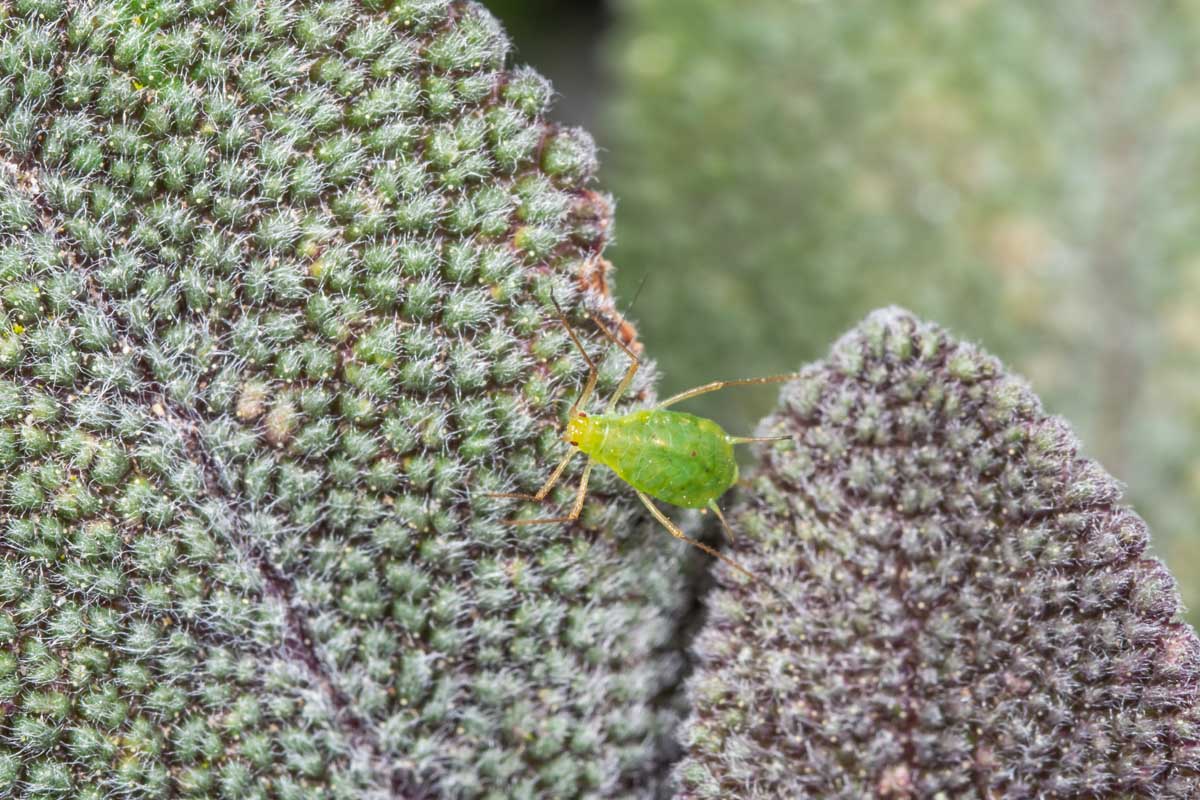
Affected plants will have yellow stippling and might be weak or stunted.
This species is rare in cooler, wet areas, but in hot, dry areas, they’re fairly common on salvia plants.
They can be addressed as you would any other species, which we discuss in our guide to aphid control.
Spider Mites
Spider mites cause similar symptoms to aphids. It might be hard to see them since they’re tiny, but you can usually see fine webbing all over your plants when they’re there.
If you see this webbing, along with symptoms, read our guide to managing spider mite infestations to learn what to do.
Disease
Don’t plant your salvia in a soggy, wet area or in heavy clay, and you can pretty much skip this section.
But if you find your plant isn’t looking right and you don’t see any sign of pests, it could be due to one of the following:
Damping Off
Damping off is a concern with young seedlings.
Caused by fungi in the Rhizoctonia and Fusarium genera, and Pythium water molds, it causes seedlings to fail. They might be weak or collapse, or they might form a mushy ring at the base.
Read our guide to damping off to learn more.
Powdery Mildew
Powdery mildew causes white, powder-like patches to form on the foliage. It’s only a problem with plants growing in humid or rainy conditions, or with overwatered plants.
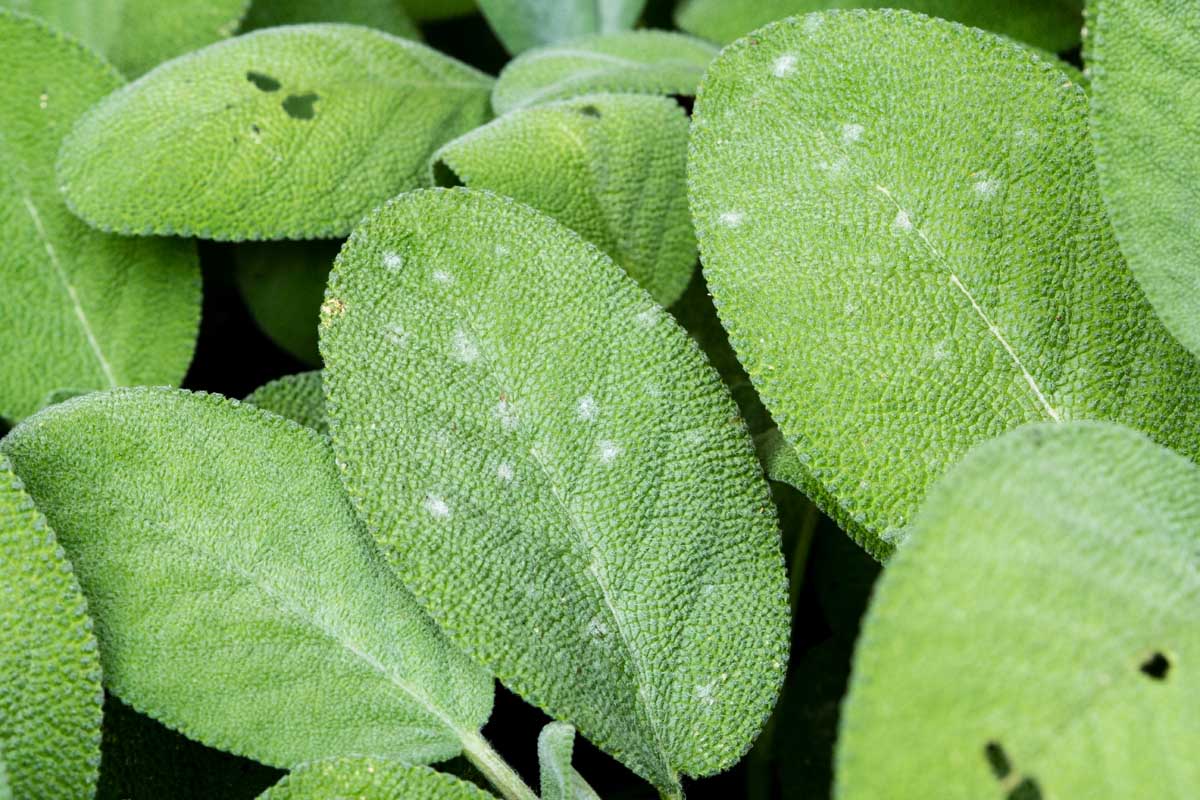
If you notice these spots on your plants, read our troubleshooting guide to learn more about how to deal with powdery mildew.
Stem and Root Rot
As marvelously tough as salvias are, they can be plagued by rot if you plant them in poorly draining soil or if they receive too much water.
Stem rot is caused by oomycetes in the Pythium genus, while root rot can be due to either Pythium pathogens or drowning of the roots because they don’t have enough access to oxygen.
Pythium lives in the soil and needs water to move and reproduce. Once it finds your plant, it causes the lower part of the stem and/or the root to turn black and rotten.
Since you can’t see the roots belowground, look for aboveground symptoms like part or all of the plant wilting or dying.
If you notice these symptoms – and they’re pretty hard to miss – reach for a fungicide.
You have to be careful, though, because these pathogens can become fungicide resistant. If you need to use more than a few treatments, switch the products up now and then.
Salvia Flower Best Uses
These tough little plants are marvelous for a broad range of uses!
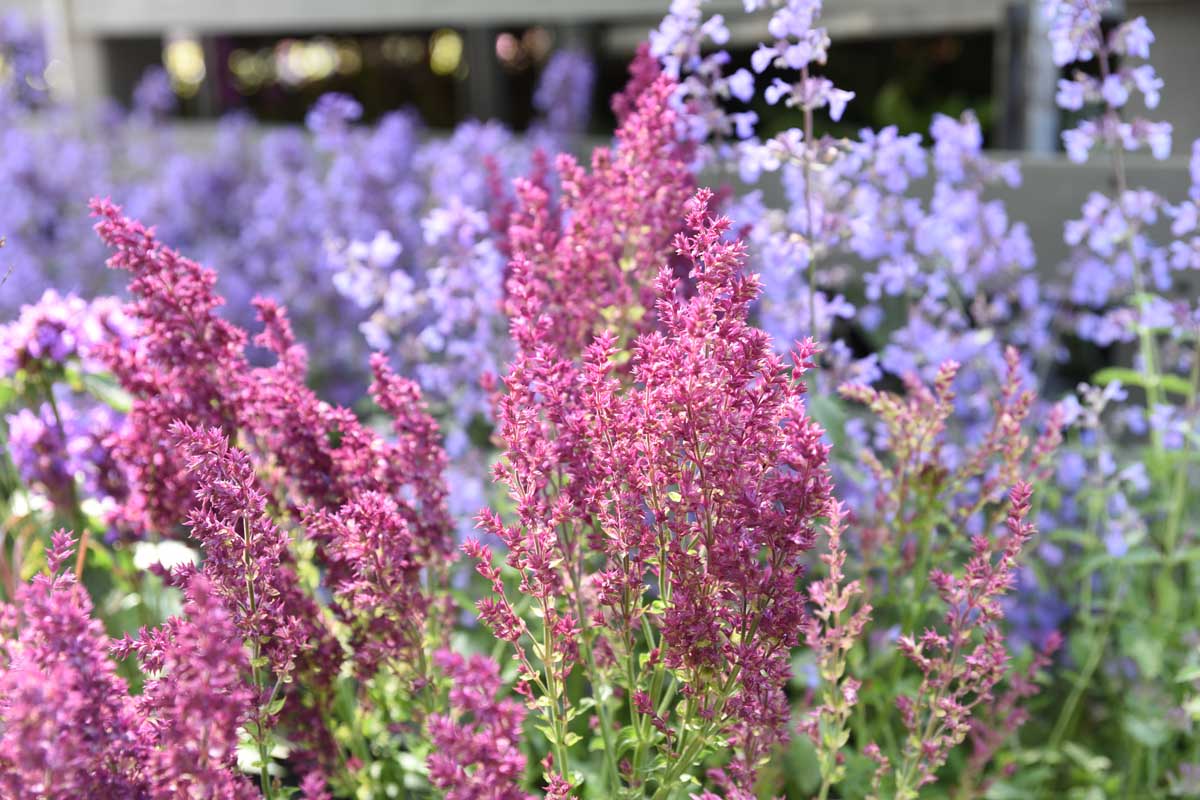
Plant them in containers for use on your patio, porch, or balcony.
Or use them as a border, a specimen, in groupings, for mass planting, or even in a cutting garden. Salvias are often overlooked as cutting plants, but they’re awesome.
With so many species and cultivars available, you have nearly limitless choices.
Quick Reference Growing Guide
| Plant Type: | Woody or herbaceous perennial or annual | Flower/Foliage Color: | Blue, red, pink, purple, orange, yellow, white, green/green, silver, yellow |
| Native to: | Every continent except Antarctica | Water Needs: | Low to moderate |
| Hardiness (USDA Zones): | 3-10 | Maintenance: | Low |
| Bloom Time: | Spring, summer, fall | Tolerance: | Drought, heat |
| Exposure: | Full sun to partial shade | Soil Type: | Sandy to loamy |
| Time to Maturity: | Under 9 months | Soil pH: | 5.5-7.5 |
| Spacing: | About 18 inches, depending on type | Soil Drainage: | Well-draining |
| Planting Depth: | Soil surface (seed), same depth as container (transplants) | Attracts: | Bees, butterflies, hummingbirds, and other pollinators |
| Height: | Typically 1-5 feet | Uses: | Containers, borders, mass planting, specimen, cutting gardens |
| Spread: | Typically 1-4 feet | Family: | Lamiaceae |
| Growth Rate: | Fast | Genus: | Salvia |
| Common Pests and Disease: | Aphids, spider mites; damping off, powdery mildew, stem and root rot | Species: | Clevelandii, dorri, elegans, fruticosa, leucantha, microphylla, officinalis, patens, spathacea, splendens, yangii |
Try Growing Adaptable, Varied, and Easy-Going Salvia
With a variety out there that’s suited to growing just about anywhere in the United States, durable salvia is a wonderful addition to many gardens.
It’s easy to care for and is not demanding when it comes to water, nutrition, or soil type. I usually have two or three types growing in my garden at any time, and you should consider adding some to yours.
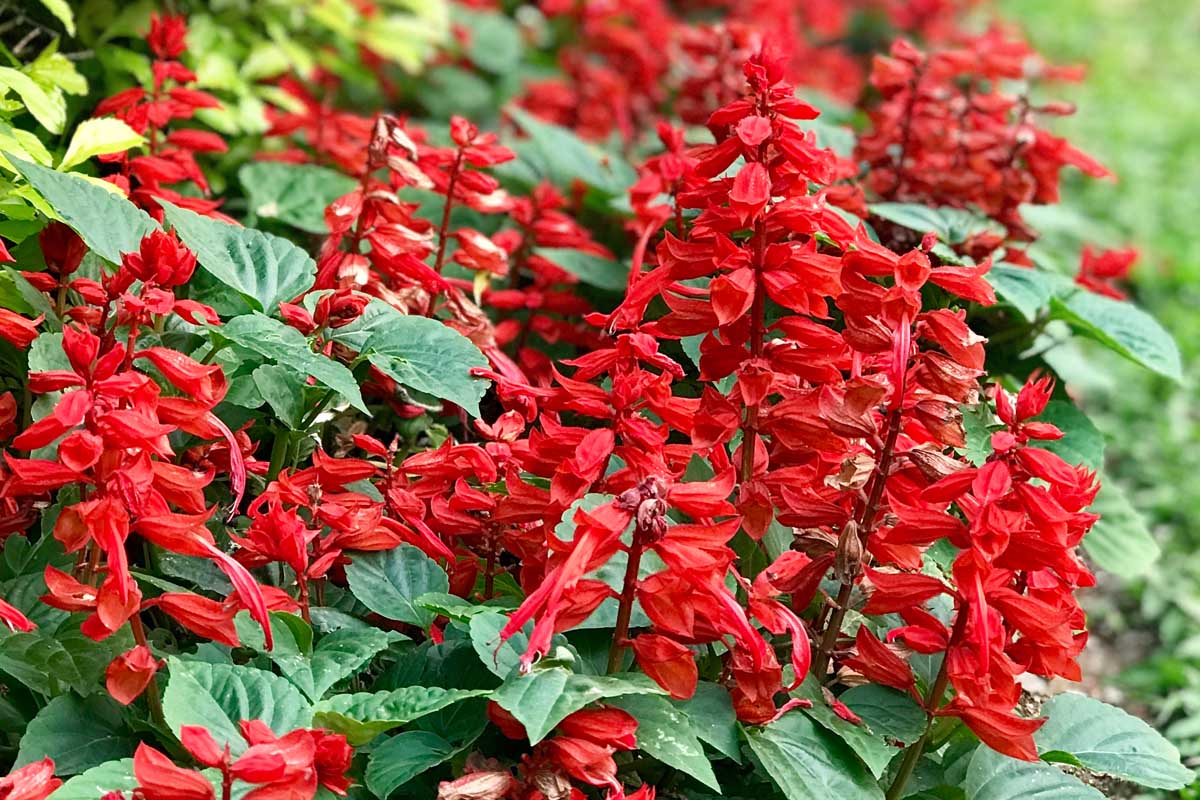
If you grow salvia already, which is your favorite? Tell us about your experience with this plant in the comments section below.
And to get started with growing some of the species in the Salvia genus, check out these guides next:

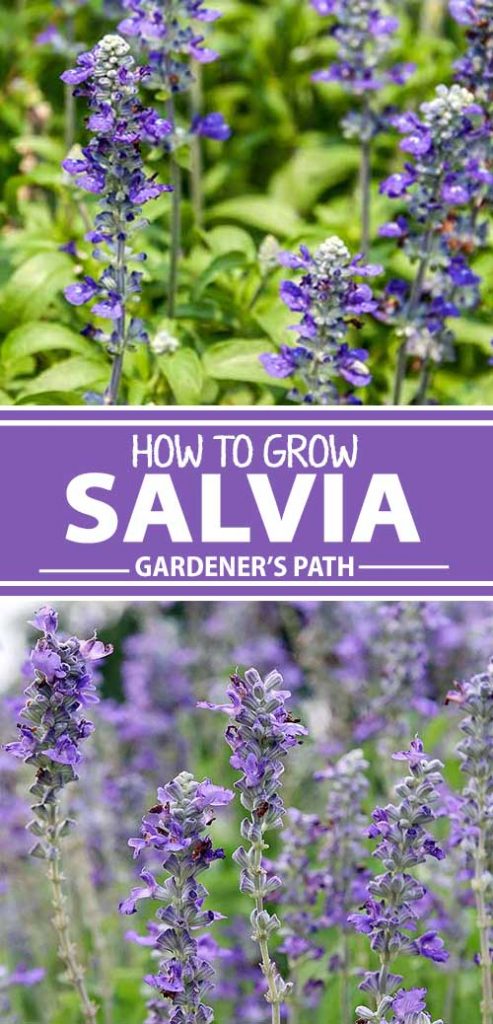
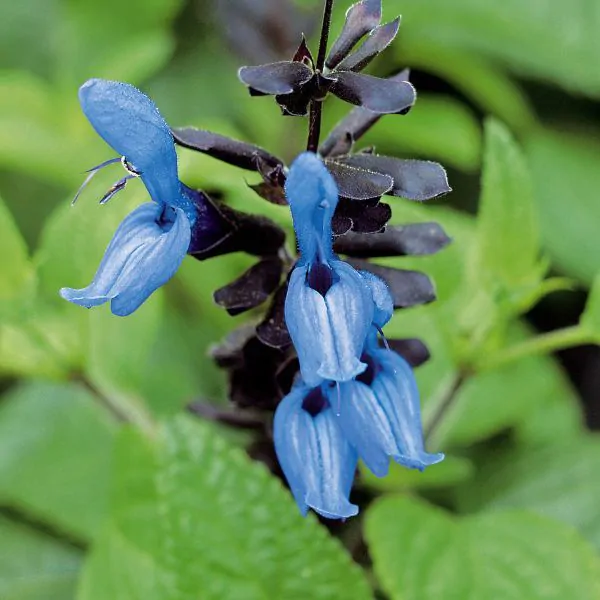
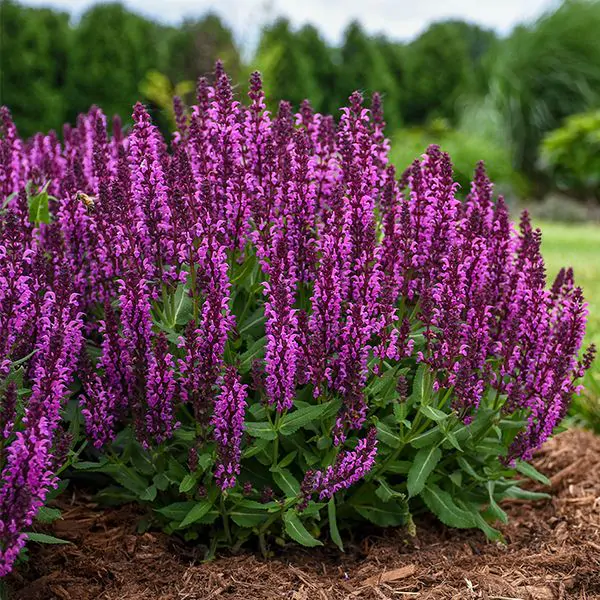
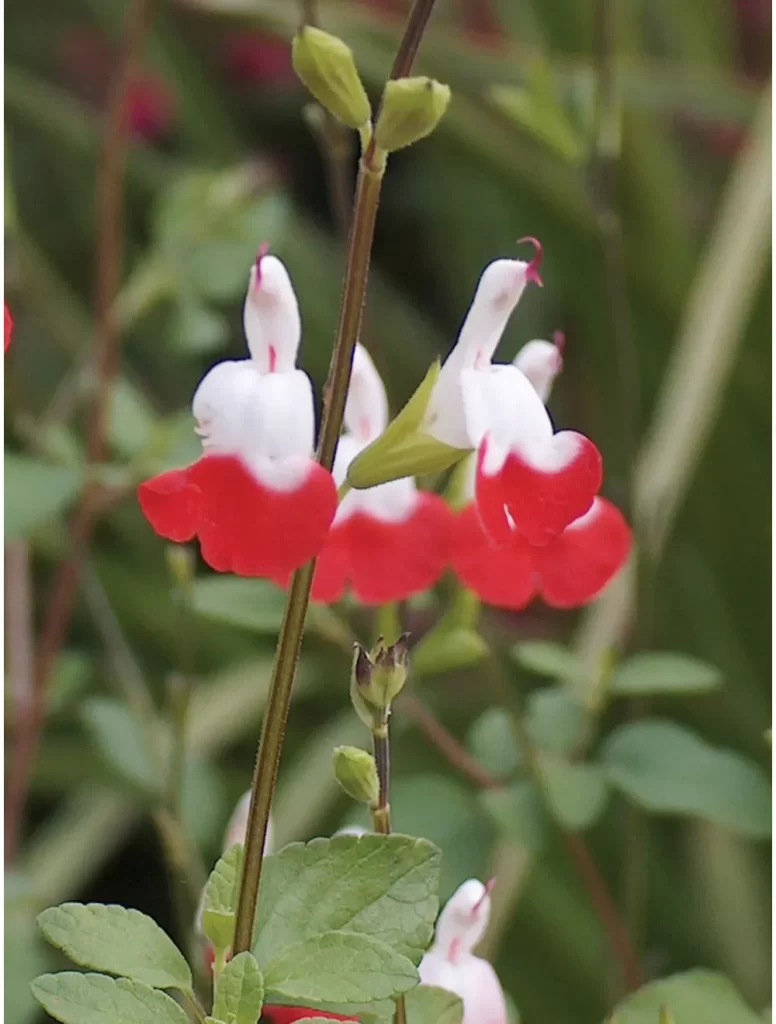
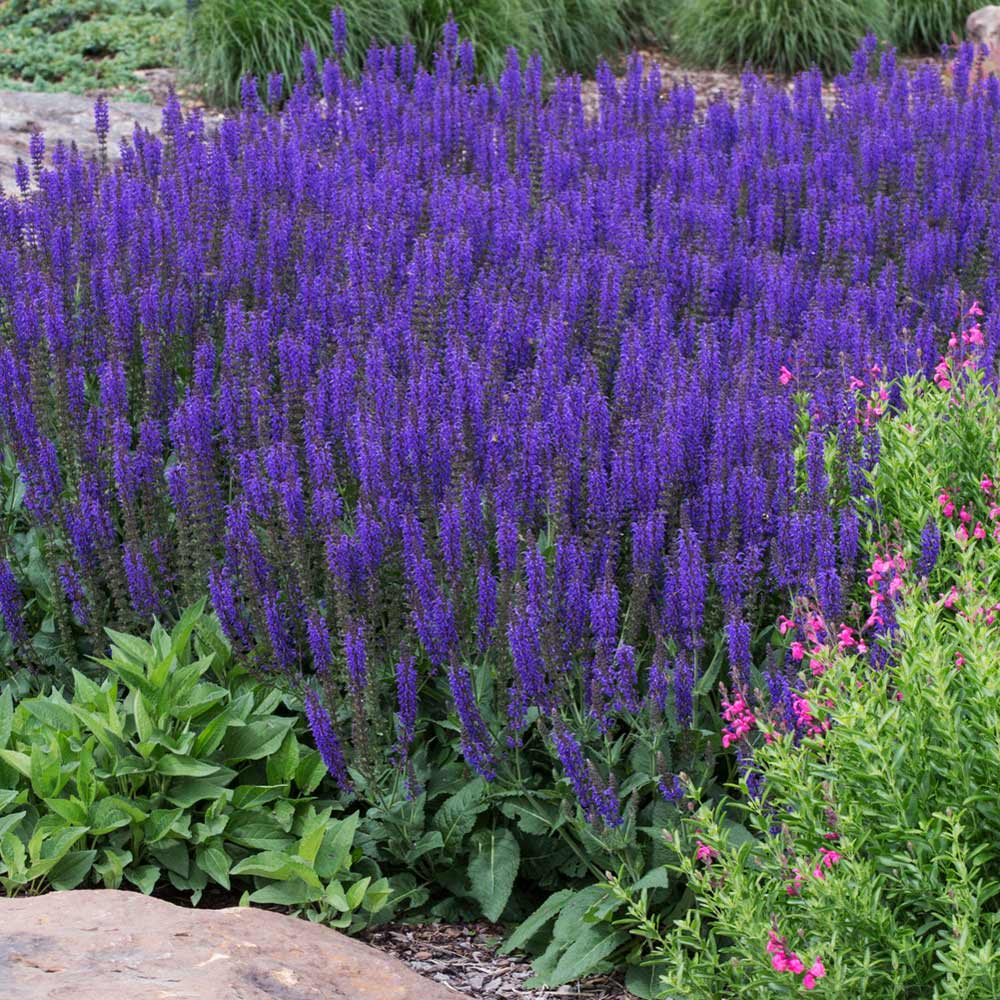
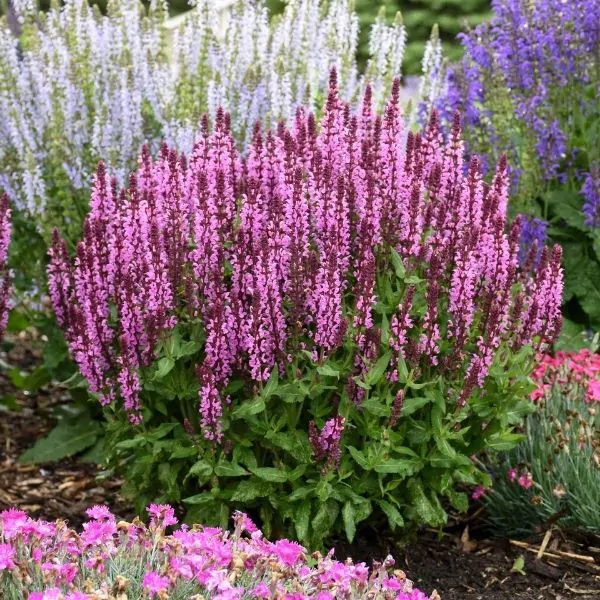
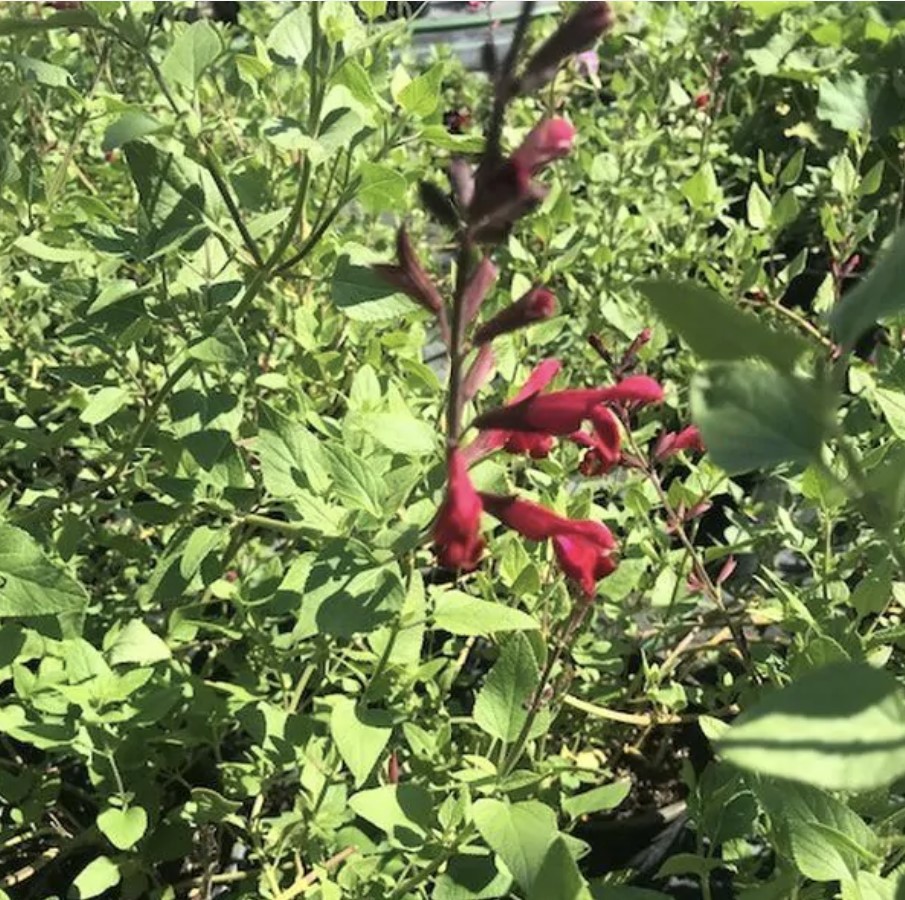

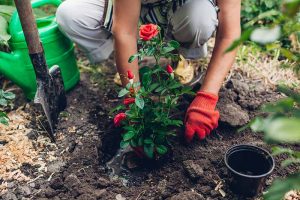
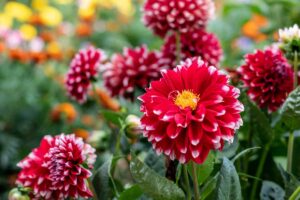

I just planted my 1st garden and used a few of the maynight and pink salvia. I am having trouble with the pink ones. They look like they are dead and not doing well. I thought maybe it needed watered but that’s not doing the trick. Please help or ideas/tricks that I might be able to try. I am going to try and cut them to see if that helps!
Hi Kassy,
Thank you for reading this article! Salvia generally don’t mind a haircut at all; give them a good shear and see if they don’t bounce back.
Can I grow it inside? I live in an apartment. With a balcony, of course.
Hey Gail! I use salvia in a number of my container plant combinations, so I think you could too. The only thing to remember is that most salvia want to have a cold winter period, so you’d need to leave those containers outdoors over the winter with a bit of protection. I keep my containerized plants outdoors in the winter and they survive just fine by being placed against the house. You could add extra protection around the containers by placing the container in a cardboard box and filling it with just about anything: newspaper, shopping bags, old clothing or… Read more »
Have a beautiful purple salvia plant. It is blooming beautifully but watered it with garden hose sprayer and the blooms have fallen over and do not seem to be straightening back up. What to do? Should the whole plant, leaves and blooms, be cut back to ground? Guess it should be watered at the base only as blooms cannot tolerate spraying on top of blooms. Need some help, please!
Hi Irishlady! Thank you for stopping by. It sounds like you could do three things: Water the base of the plant, as you mentioned. Install a grid support stake or peony stake (easy to find at most gardening stores) to help the plant stay upright. Deadhead the salvia by using pruning shears to remove the spent stalks, which come in sets of threes (the central flower stalk and then one on either side. The central stalk will have bloomed first). By doing this, you provide support for the plant, remove spent flowers so that the plant can focus its energy… Read more »
If the blooms are turning brown in mid summer, should they be cut back? Red and Purple potted.
Thanks for your question, Lori. Yes, all perennial salvias should be deadheaded when the blooms are finished. This will promote continuous blooms throughout the season as well as cleaning up their appearance.
Hi! We inherited beautiful salvia from the previous owners. They have done well over the past 12 years. After the big winter storm in February we cut them right back and they’ve bounced back. Only issue is that most of them are now white, instead of a mix of pink and white. Help! Judging from your pictures, I think we have S. Gregii. Thank you!
Hello Katy! I suspect the white blooming salvia braved the storm, since they are the most tolerant of cold, even more than the ones with colorful blooms. Is it possible that the pink ones died and the white ones stayed on? If I was in your shoes, I might try to root a few cuttings from any pink that survived in autumn, which is the season for that. Then maybe you’ll be able to get the balance back where you want it. I would love to hear how this turns out. It’s nice that you’ve been able to tend this… Read more »
I love Pineapple Salvia, which grows to about 6 feet and blooms in late fall with brilliant scarlet flowers, providing autumn food for hummingbirds. And I’ve fallen in love with Phyllis Fancy, a light purple and white beauty. Best collection of salvia varieties I’ve found is at Joy Creek Nursery in Scapoose, Oregon. They offer great service.
Hello Mary Treiber! Salvia elegans ‘Pineapple’ is a hummingbird magnet, for sure, and I also love the fragrant leaves! Thanks for the tip about ‘Phyllis Fancy.’ And it’s good to know you’ve found a reliable supplier. Happy gardening!